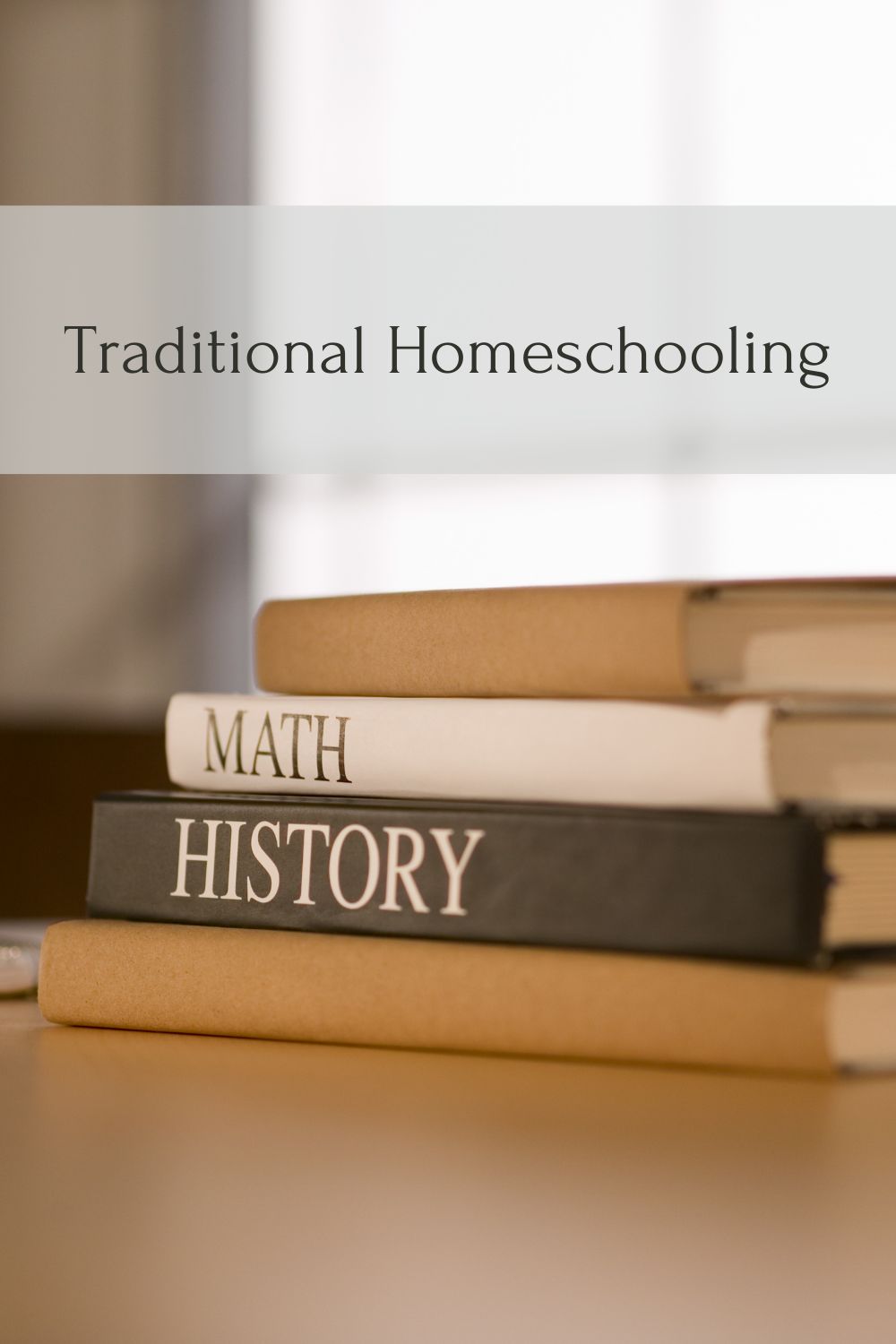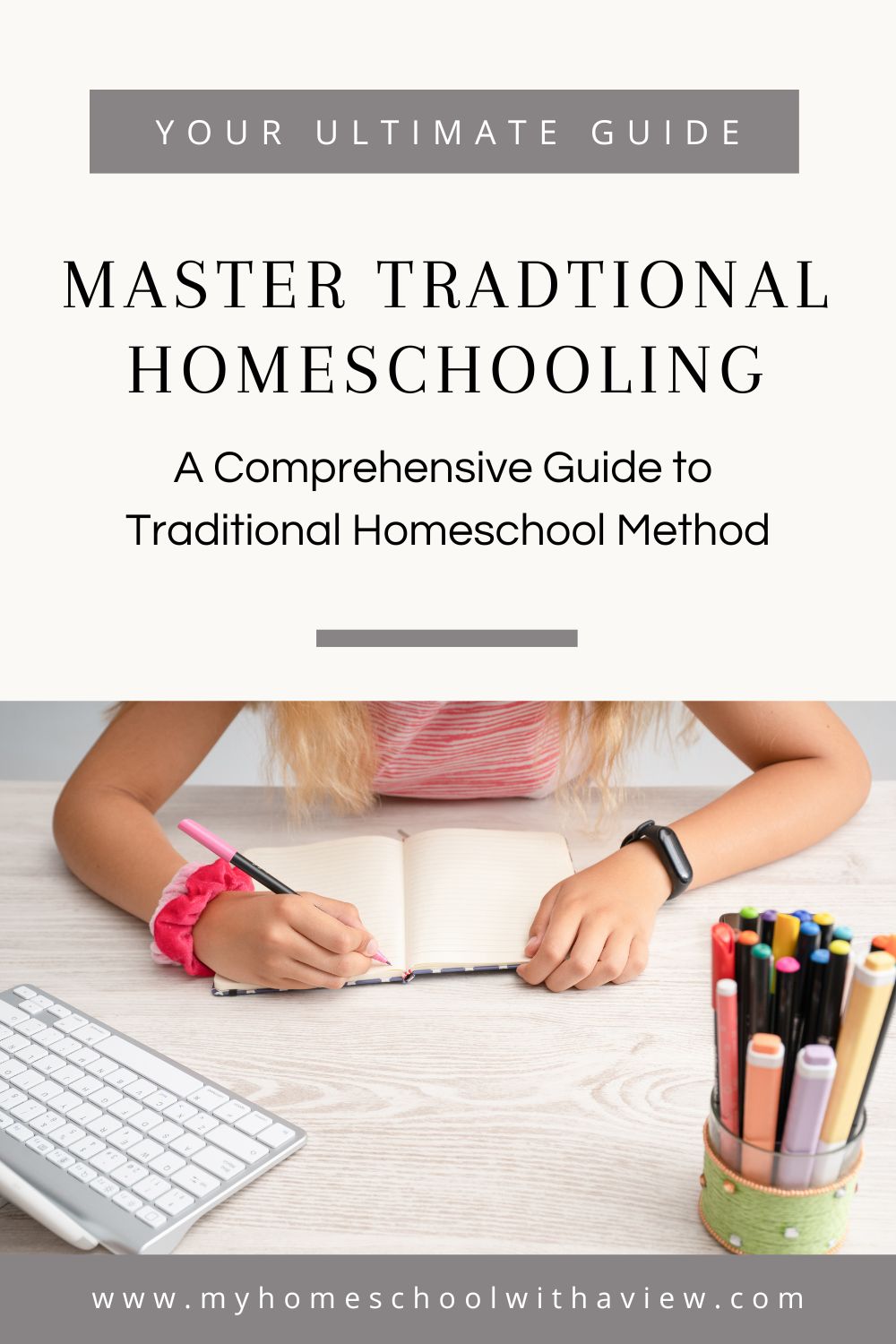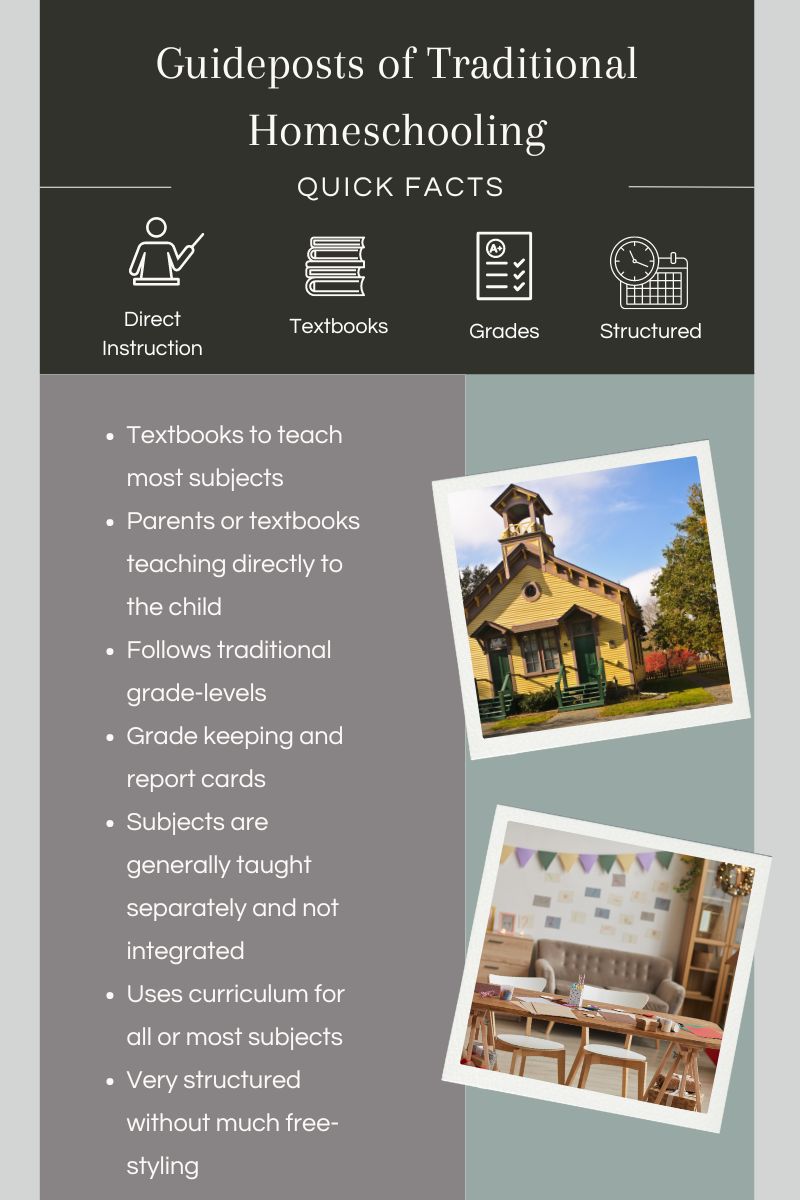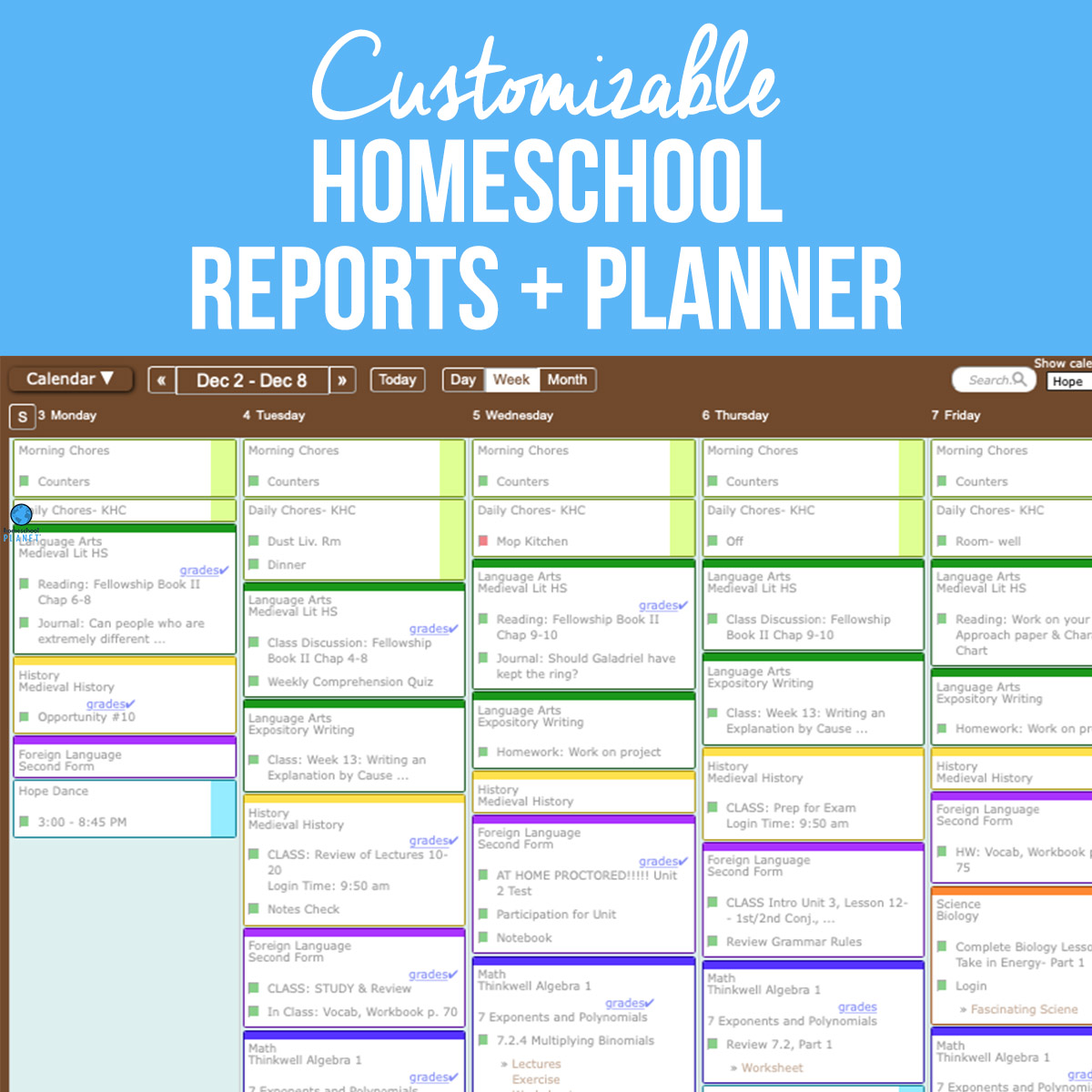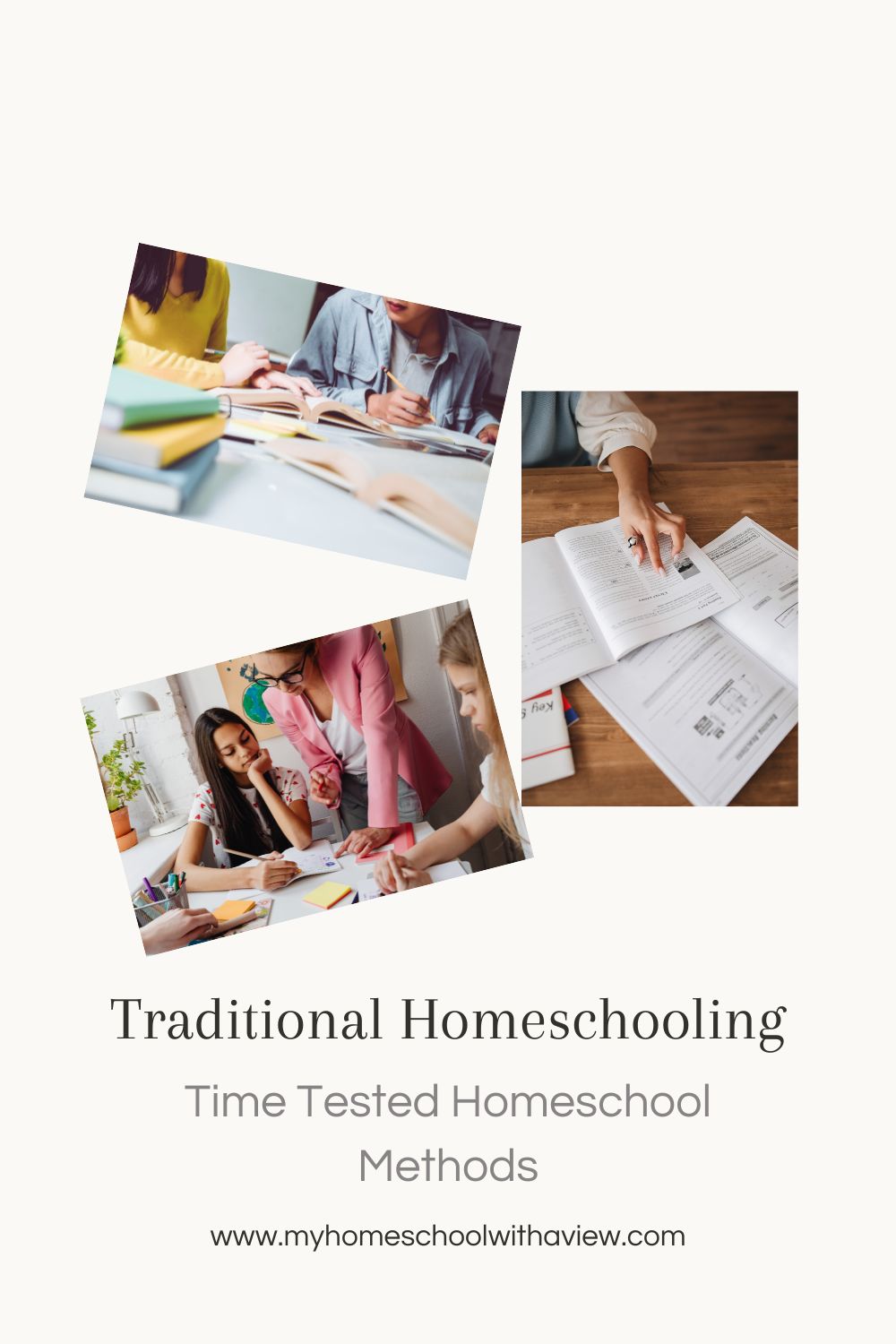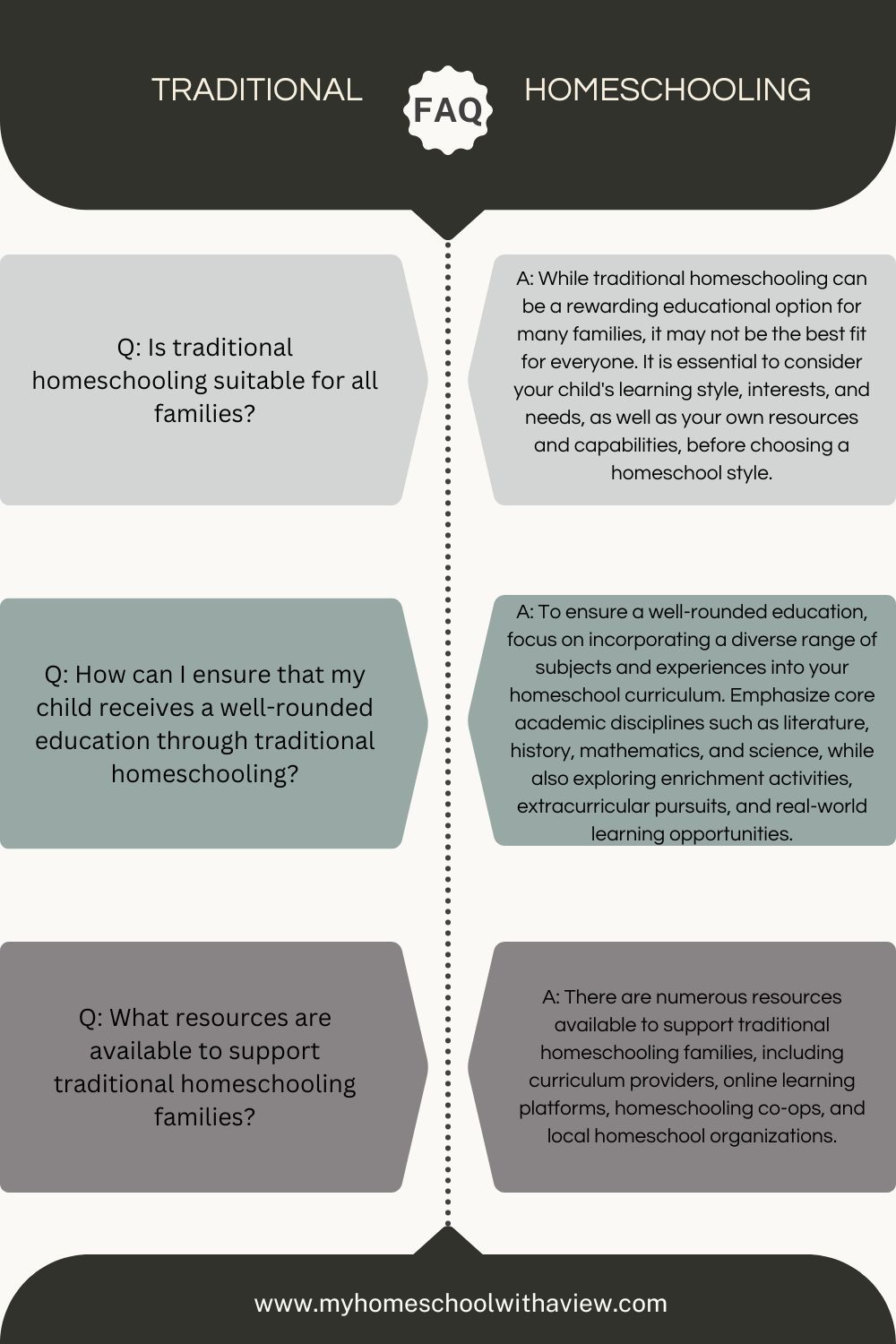This post is all about Traditional Homeschooling.
With so many homeschool styles or homeschool methods available, traditional homeschooling seems to be the one approach that gets a lot of criticism. Some homeschoolers are so eager to shun the ways of school as they once knew it that they become overzealous to throw off any traditional homeschooling methods.
As a second generation homeschooler, I have seen much debate over what is the best homeschooling method. Loyalties to one approach seem to be ingrained in certain groups.
But we don’t get caught up in all of that at My Homeschool with a View. We believe in empowering you to make the best possible decision for your homeschool.
In this post you will learn both the advantages and challenges of traditional homeschooling, as well as how to implement traditional homeschooling curriculum.
Traditional homeschooling is a time-tested approach that continues to resonate with families. It provides structure, depth, and a sense of continuity in education. Rooted in foundational principles and traditional homeschool curriculum, the traditional homeschool style offers a compelling alternative to less structured homeschool models.
In this post, let’s explore the essence of traditional homeschooling, understanding its advantages, implementation strategies, and consideraations.
This post is all about traditional homeschooling.
This post contains affiliate links and My Homeschool with a View, LLC participates in the Amazon Associates program. If you make a qualifying purchase through our links, we earn a commission at no additional cost to you . Thank you for supporting this site! You can read my affiliate and advertising disclosure here.
Understanding Traditional Homeschool Mehods
Traditional homeschooling is a time-tested approach that continues to resonate with families. It provides structure, depth, and a sense of continuity in education. Rooted in foundational principles and traditional homeschool curriculum, the traditional homeschool style offers a compelling alternative to less structured homeschool models.
The Guideposts of Traditional Homeschooling Lessons
No matter which homeschool style we choose, as homeschoolers we have the freedom to own it and customize everything to our families’ needs. With that being said, there are some main guidelines that are foundational to the traditional homeschool style.
- Textbooks to teach most subjects
- Parents or textbooks teaching directly to the child
- Follows traditional grade-levels
- Grade keeping and report cards
- Subjects are generally taught separately and not integrated
- Uses curriculum for all or most subjects
- Very structured without much free-styling
The Roots of Traditional Homeschooling
Traditional homeschooling finds its roots in the early homeschool movement. Before homeschooling hit the mainstream starting in the late 1980s or early 1990s, there weren’t a lot of resources available to homeschoolers. Families had to take the available options, which were usually traditional textbooks. Some families created their own style and curriculum, but that wasn’t common.
Families had a desire to homeschool and limited shared knowledge (this was before the internet). Parents often went with the method that was passed down in the US from generation to generation.
Traditional homeschooling emphasizes the importance of a well-rounded education. It encompasses all of the subjects being taught to public-schooled peers: Math, English, Social Studies, Science, and Electives.
Defining Traditional Homeschooling Curriculum: Teaching with Textbooks
At the heart of traditional homeschooling lies a curriculum steeped in proven and widely accepted methodology. Traditional curriculum prioritizes foundational knowledge. It encompasses pieces of literary works, historical facts, arithmetic, grammar, and formulaic writing.
Students immersed in traditional methods are often well prepared for standardized testing. They can transition seemlessly to college classroom environments.
The use of textbooks to teach core subjects is the defining piece of traditional homeschool curriculum. Direct instruction, whether through textbooks, from the parent, or from an online teacher are also a main component of traditional homeschool curriculum.
Related: 19 of the Best Traditional Homeschool Curriculum Options – My Homeschool with a View
Advantages of Traditional Homeschooling
Emphasizing Foundational Knowledge
Traditional homeschooling places a premium on instilling core academic skills and knowledge. This serves as the bedrock for lifelong learning.
By focusing on the mastery of fundamental concepts and disciplines, students develop a solid educational foundation. This empowers them to tackle complex subjects with confidence and competence.
From mastering arithmetic operations to writing a five paragraph essay, traditional homeschoolers embark on a learning adventure that prepares them well for post homeschooling endeavors.
Ample Homeschool Curriculum Choices
Since traditional homeschooling has been a popular homeschool style for many years, there is an abundance of curriculum choices available. You have your choice of what resonates with you.
Related: 19 of the Best Traditional Homeschool Curriculum Options – My Homeschool with a View
Back when I was homeschooled, traditional homeschool curriculum was basically the only option available.
Out of all of the traditional curriculum I have used, my personal favorite is BJU Press.
Implementing Traditional Homeschooling Curriculum and Methods
Crafting Comprehensive Traditional Homeschooling Lesson Plans
The key to successful traditional homeschooling lies in a comprehensive curriculum plan. The ideal plan balances academic rigor with flexibility and adaptability.
Begin by prioritizing skills subject areas. Then add in content and dessert subjects. Select high-quality resources that align with your values and resonate with you.
Whether utilizing boxed curricula or designing your own, tailor the experience to suit the unique needs and interests of your kids. Take a holistic approach that integrates all subject areas.
In any homeschool style, it’s important to put together a course of study that enriches our kids lives. Our children our whole people and education should feed all aspects of that.
Fostering Critical Thinking Skills
Traditional homeschooling can be weak in the area of teaching kids how to think. Learning leans toward memorizing facts and synthesizing information.
This doesn’t mean you should toss this method out the window. We’re homeschoolers, and we know how to adapt and create a well rounded educational experience.
It is important to extend learning beyond rote memorization. We want to foster critical thinking, analytical reasoning, creative problem-solving, and independent learning. Teaching our kids to engage with what they are learning and to develop the cognitive agility is an important aspect of any homeschool style.
By nurturing a spirit of inquiry and intellectual curiosity, traditional homeschooling can equip students with the tools they need to navigate an ever-changing world with discernment and insight.
Incorporating Time-Tested Homeschool Methods
Central to the success of traditional homeschooling are time-tested teaching techniques. These strategies should engage the intellect, shore up learning weaknesses, and build upon academic strengths.
Embrace direct instruction, parent guided discovery, and core curriculum. These tools can facilitate deep engagement with academic content.
Encourage active participation through discussions, debates, and hands-on activities that bring abstract concepts to life. By fostering a dynamic learning environment, traditional homeschooling cultivates intellectual curiosity and a thirst for knowledge.
Overcoming Challenges in the Traditional Homeschool Method
Addressing Potential Limitations
While this homeschool method offers many benefits, it is not without its challenges. From balancing multiple grade levels to managing time and resources effectively, there may be obstacles along the way.
Address potential limitations by seeking support from homeschool communities. You can access online resources and forums (like My Homeschool with a View) for information and help.
Navigating Homeschool Laws
One of the most important and over-looked tasks of all homeschooling families is navigating regulatory requirements and compliance with regulations. Familiarize yourself with homeschool laws and regulations in your state. Ensure that you meet all requirements for homeschooling.
Since traditional homeschooling looks very similar to school at home, it usually meets these standards easily. Educational professionals and writers of homeschool law are most familiar with this method, so I would venture to guess that most homeschool laws were written with this picture of education in mind.
Keep records of your child’s educational progress. This may include attendance, coursework, and assessments, as required by your state.
Seek guidance from local homeschooling organizations and legal experts to navigate the regulatory landscape with confidence and clarity.
Enriching the Traditional Homeschool Experience
Integrating Enrichment Activities
Even if you choose to go with this more traditional approach to homeschooling, it doesn’t mean you can’t enrich the experience. Enhance traditional homeschooling by integrating enrichment activities that foster creativity, collaboration, and personal growth.
Explore extracurricular pursuits such as music, art, sports, and community service that complement the academic curriculum. Provide opportunities for exploration and outside of acedemics.
Organize field trips to museums, historical sites, and nature reserves to deepen understanding of curriculum taught. Embrace a holistic approach to education that celebrates the pursuit of knowledge in all its forms, both inside and outside the classroom.
My View of Traditional Homeschool Methods and Curriculum
As we look into the method of traditional homeschooling, let’s remember that this homeschool style is rooted in a foundation of tested and proven educational methods. It is not an inferior homeschool style by any means.
By embracing tradition, we can impart to our children the tools they need to navigate life after homeschooling. We can launch them into an ever-changing world with confidence, curiosity, and knowledge.
The most important consideration in choosing a traditional homeschool method is if it will engage your kids and get the job done. Homeschooling is about them and their learning, not about the naysayers on the internet.
I have used different homeschool styles, including traditional homeschooling, at different places of our homeschool adventure. You as the parent have the capability to make your homeschool life-giving for your kids, even with a traditional homeschool style. So homeschool with confidence and remember you never have to stay loyal to one single homeschool style.
FAQ About Traditional Homeschooling
Q: Is traditional homeschooling suitable for all families?
A: While traditional homeschooling can be a rewarding educational option for many families, it may not be the best fit for everyone. It is essential to consider your child’s learning style, interests, and needs, as well as your own resources and capabilities, before choosing a homeschool style.
Q: How can I ensure that my child receives a well-rounded education through traditional homeschooling?
A: To ensure a well-rounded education, focus on incorporating a diverse range of subjects and experiences into your homeschool curriculum. Emphasize core academic disciplines such as literature, history, mathematics, and science, while also exploring enrichment activities, extracurricular pursuits, and real-world learning opportunities.
Q: What resources are available to support traditional homeschooling families?
A: There are numerous resources available to support traditional homeschooling families, including curriculum providers, online learning platforms, homeschooling co-ops, and local homeschool organizations.


